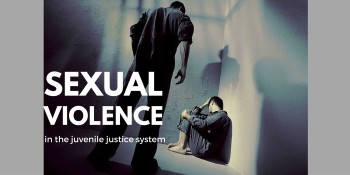2016 Summer Institute Session 2: Sexual Violence in the Juvenile Justice System

By Francesca Sands, Juvenile Justice Fellow
On Wednesday, the CFYJ interns hosted the second session of the 2016 Summer Institute speaker series. We welcomed Tara Graham, senior program specialist at NCCD’s National PREA (Prison Rape Elimination Act) Resource Center, to 1220 L to speak on PREA and sexual violence among youth in detention. In a lively and informative presentation, Tara explained about PREA’s conceptions and applications, and how sexual violence is still a pervasive occurrence, especially among youth, in correctional facilities. Her extensive knowledge of the subject allowed for a deeply constructive discussion.
Tara began her talk by outlining PREA’s provisions and the standards it requires of facilities to keep inmates safe from sexual violence. While PREA is an indisputably beneficial policy for the incarcerated community, Tara emphasized that there are ongoing problems with its implementation. Because it’s an unfunded mandate, save for DOJ grant programs, its standards are very difficult to apply, especially those standards that impact youth. A particularly relevant PREA standard that affects youth in adult facilities is that the youth must be sight and sound separated from the adult population. But as Tara noted, this poses logistical challenges: What if there are only a couple youthful inmates at a time? How much is this going to cost? The penalty for noncompliance is a mere five percent of grant funding, so it’s not exactly incentivizing to spend the time and money necessary to comply with PREA standards; in other words, there is not much of a disincentive not to comply.
Tara then shifted her focus to the culture surrounding sexual violence in detention. Sexual violation is underreported in the “free world,” which means it’s dismally underreported in correctional facilities. Tara talked about how, troublingly, staff members are very often perpetrators of sexual violence towards youthful inmates, of their own accord. But whether the abuse is done by a staff member or another inmate, the consequences of such trauma are crippling: mental health issues, substance abuse, STI’s, and erratic behavior are among those effects that plague survivors most. Perhaps Tara’s most percipient point was that the implementation of PREA standards cannot be done in a vacuum; a cultural change must occur in correctional facilities as well.
Just being under the age of 18 in detention is, in itself, a risk factor for sexual violence. And LGBTQ youth are at a far higher risk. Tara ultimately recommends that in order to better adhere to PREA standards, facilities must collect more data about their inmate populations, work with and talk to other nearby facilities to resolve logistical issues, and ask new inmates about their sexual orientation and consider their sexual and gender perception.

